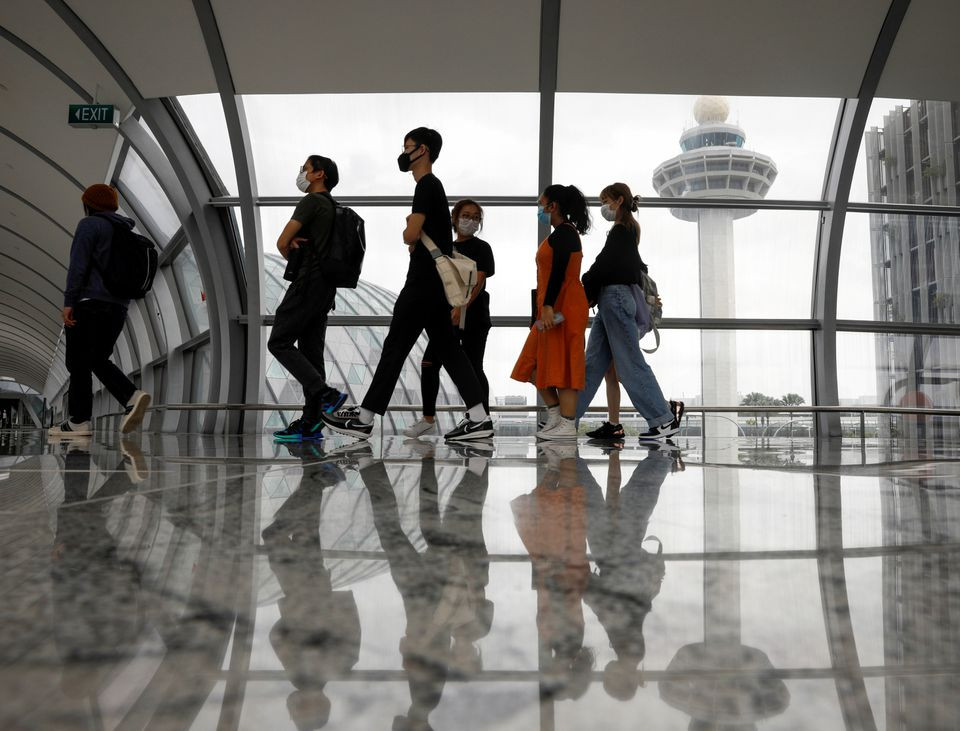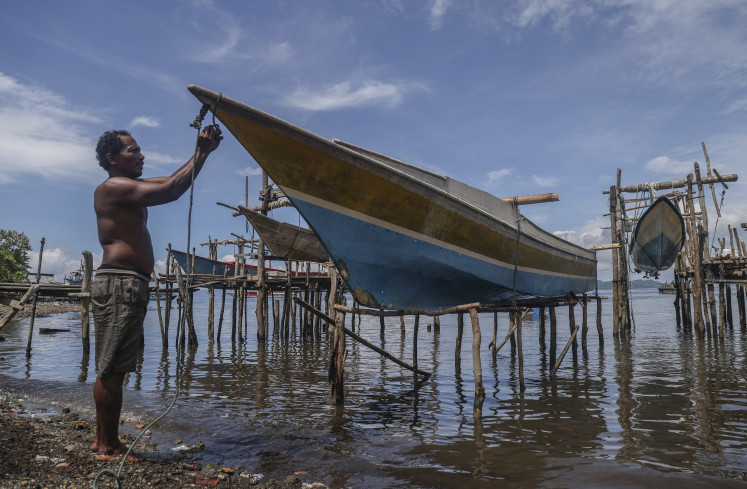Popular Reads
Top Results
Can't find what you're looking for?
View all search resultsPopular Reads
Top Results
Can't find what you're looking for?
View all search resultsKeep fingers crossed in COVID-19 battle
Tight vaccine supplies are a major factor and experts caution that unless most of the global population is vaccinated, and richer countries share more of their vaccines, the world will face a far longer bout with the coronavirus than anticipated.
Change text size
Gift Premium Articles
to Anyone
T
he month of August has special significance for ASEAN as three countries celebrate their national days: Singapore on Aug. 9, Indonesia on Aug. 17 and Malaysia on Aug. 31.
The celebration of national days strengthens the unity amongst the individuals of a community and empowers them to seek their roles and responsibility for national integrity and development; to remember the contributors for their principles, convictions and sacrifice for others welfare and development and propriety. So postponing the big day is probably unheard of but because of the prolonged COVID-19 globally, sometimes the impossible happens.
The city-state of Singapore started the ball rolling by pushing its national day celebrations to Aug. 21. This was very much in line with the move of easing restrictions, which gave much indication and rejoice that life is returning back to normal for the people in Singapore.
The major newspapers here reported that the authorities worked to their bones to contain the spread, coming up with slew of measures and robust implementations. So it seemed all was in order until the defiant ones decided to test the system. So the end result, it all went on a tailspin after a sudden outbreak.
Quite honestly, there is no immediate answers to contain the prolonged COVID-19 pandemic, and even Singapore’s Finance Minister Lawrence Wong said that the current crisis could stretch to four or five years. The 1918 Spanish flu epidemic, which lasted about two years, gives a model for what might happen, he said.
Singapore’s latest headaches come with the karaoke lounges (KTVs) wherein in October 2020, the Immigration Authority of Singapore (ICA) made a provision to allow Singaporeans to be reunited with their foreign partners after being separated due to the ongoing pandemic. It was truly on a compassionate ground where the government recognized the need to support its citizens.
But no one saw the exploitation as Singapore Law Minister, K. Shanmugan rightfully pointed out as “abuse” that was in link with the swift removal of boyfriend/girlfriend category under Familial ties lane. So here’s the love story, which clearly didn’t touch the hearts of many Singaporeans.
The first outbreak is linked with the KTV where the Vietnamese hostess entered Singapore in February this year on a short-term visit pass via Familial ties lane sponsored by her Singaporean boyfriend. Being the first case, it had a ripple effect with the growing KTV cluster of COVID-19 infections.
So the earlier plan to progressively open as the country’s COVID-19 taskforce revealed that they’re easing measures “across the board” after successfully keeping the latest wave under control was postponed. Of note, Singapore Health Minister Ong Ye Kung described KTV lounge cluster as “very troubling and disappointing”. Clearly, the 4G leaders are doing whatever they can to bring the nation back to its feet where people could return back to norms.
The COVID wave didn’t end at KTV but later made it to Jurong Fishery Port, which led to closure to break the chain of COVID-19 transmission and to enable deep cleaning. But it didn’t contain at the port but spread to wet markets and stalls too. So the ripple effect was greater, damage done. One of the root causes of the Jurong Port outbreak was due to lapses of mask wearing.
For those who were adhering to the rules and carried out the safe distancing measures, they were livid. For business owners, especially for F&B, this was again a hard hit. On July 23, the Ministry of Finance (MOF) announced a S$1.1 billion (US$880 million) support package to help cushion workers and businesses from the impact of phase two (heightened alert) measures in place from July 22 to Aug 18.
While the war with COVID-19 continues, Singapore is highly optimistic that life will be back to normal sooner than later. The aim is to vaccine 2 in 3 residents against COVID-19 by National Day. According to the latest figures, a total of 7,365,873 doses have been administered in Singapore. On record, more than 3.1 million people have been fully vaccinated as at July 26; that’s 55 percent of the total Singapore population. So in order for the nation to hit its target of vaccinating two-thirds, around 668,000 people have to be fully vaccinated.
And while Singapore is likely to be ahead of the curve in vaccinations, most other people in the world are not, say experts. Singapore authorities plan to get everyone in the country who is eligible for vaccination to be inoculated by the third quarter of 2021. During this period of pandemic limbo, life within Singapore may go back almost to normal but other countries may still suffer outbreaks and be subject to control measures that Singapore has relaxed.
Keep fingers crossed. In almost every certainty, a perfect storm with the coronavirus appears to be brewing across the Asia-Pacific region: surges in the highly contagious delta variant combined with slow vaccination uptake. Tight vaccine supplies are a major factor and experts caution that unless most of the global population is vaccinated, and richer countries share more of their vaccines, the world will face a far longer bout with the coronavirus than anticipated.
The American administration has pledged to donate more than 80 million doses to countries in need, with 23 million going to Asia. Some 3 million doses of Moderna arrived in Indonesia from the US on July 11 -- but the rollout needs to significantly increase in order to meet the WHO’s target to vaccinate at least 10 percent of every country in the world by the end of September.
For the pandemic to end and the virus to become manageable on a global level and COVID-19 to become manageable as with other coronaviruses, between 10 and 12 billion doses need to be administered around the world. That number currently stands at around 3.7 billion, according to the WHO.
Keep fingers crossed, again. The best-case scenario is that through these vaccination efforts that by the end of next year we have produced enough vaccines that can vaccinate a majority of the population worldwide, and that vaccination is effective in terms of preventing severe cases of death.
Previously most of us were more optimistic about how and when the pandemic is going to end.
But now, with that divide in terms of vaccine access, in terms of the strategies adopted by countries, in terms of the continued emergence of the new variants, the optimism appears to be evaporating. So, let’s keep fingers crossed.
***
The writer is a Singapore-based journalist.










